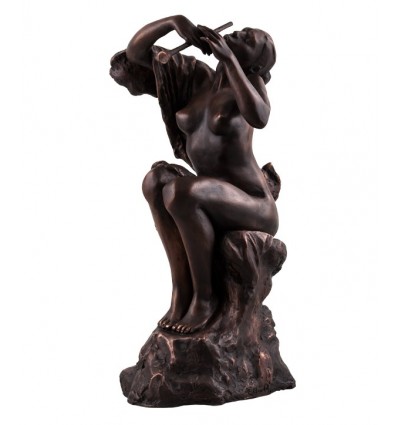No products
Product successfully added to your shopping cart
There are 0 items in your cart. There is 1 item in your cart.
Modern Art
100% Bronze material with brown patina
Signed
Size – 53 x 30 x 25 cm
Weight – approx. 17,5 kg
1 Item
Warning: Last items in stock!
Fascinated with stone and soil as a child, as a young woman she studied at the Académie Colarossi with sculptor Alfred Boucher. (At the time, the École des Beaux-Arts barred women from enrolling to study.) In 1882, Claudel rented a workshop with other young women, mostly English, including Jessie Lipscomb. Alfred Boucher became her mentor and provided inspiration and encouragement to the next generation of sculptors such as Laure Coutan and Claudel. The latter was depicted in "Camille Claudel lisant" by Boucher and later she herself sculpted a bust of her mentor. Before moving to Florence and after having taught Claudel and others for over three years, Boucher asked Auguste Rodin to take over the instruction of his pupils. This is how Rodin and Claudel met and their tumultuous and passionate relationship started.
Around 1884, she started working in Rodin's workshop. Claudel became a source of inspiration, his model, his confidante and lover. She never lived with Rodin, who was reluctant to end his 20-year relationship with Rose Beuret. Knowledge of the affair agitated her family, especially her mother, who never completely agreed with Claudel's involvement in the arts. As a consequence, she left the family house. In 1892, after an unwanted abortion, Claudel ended the intimate aspect of her relationship with Rodin, although they saw each other regularly until 1898.
It would be a mistake to assume that Claudel's reputation has survived simply because of her once notorious association with Rodin. The novelist and art critic Octave Mirbeau described her as "A revolt against nature: a woman genius". Her early work is similar to Rodin's in spirit, but shows an imagination and lyricism quite her own, particularly in the famous Bronze Waltz (1893). The Mature Age (1900) whilst interpreted by her brother as a powerful allegory of her break with Rodin, with one figure The Implorer that was produced as an edition of its own, has also been interpreted in a less purely autobiographical mode as an even more powerful representation of change and purpose in the human condition.
In the early years of the 20th Century, Claudel had patrons, dealers, and some commercial success.








